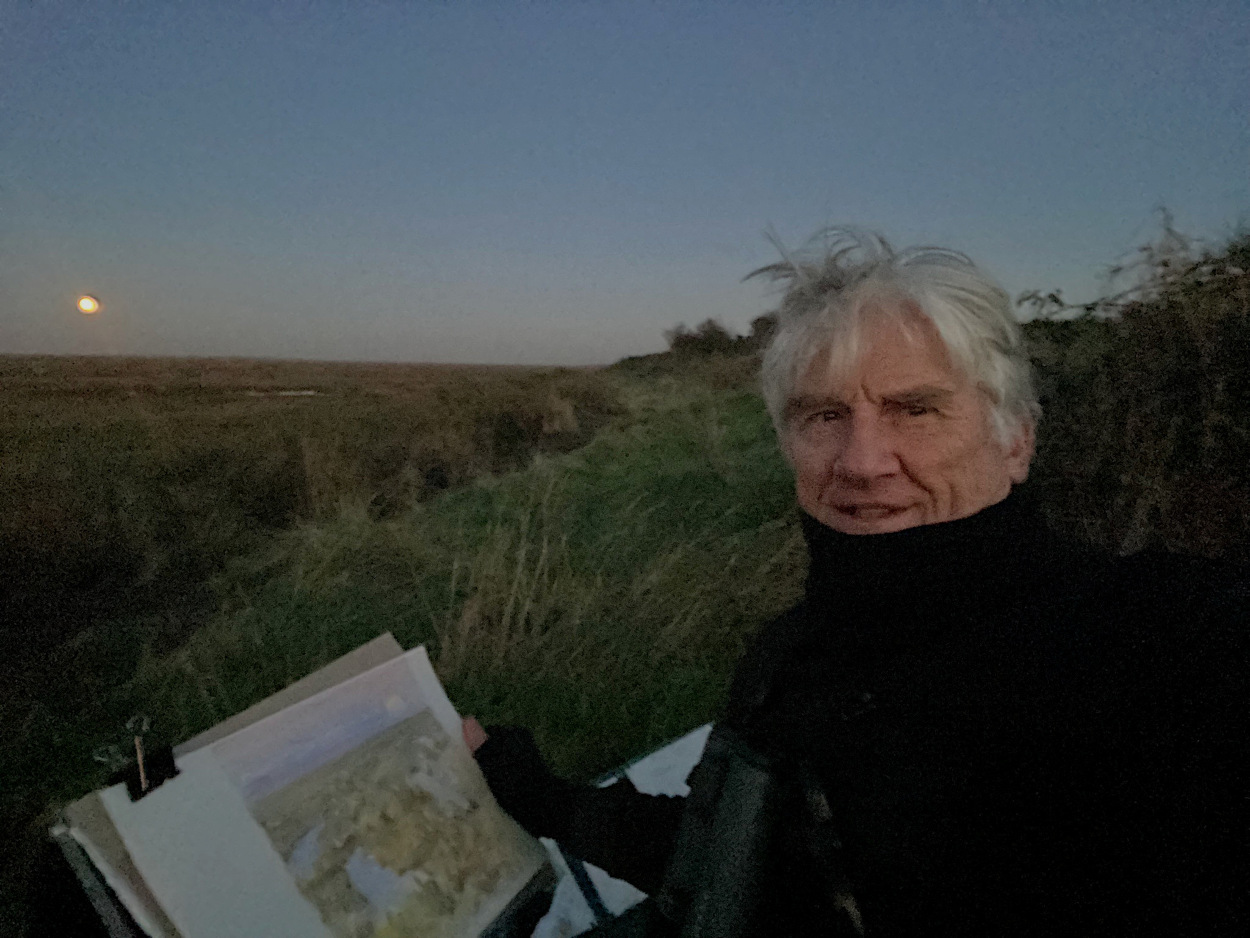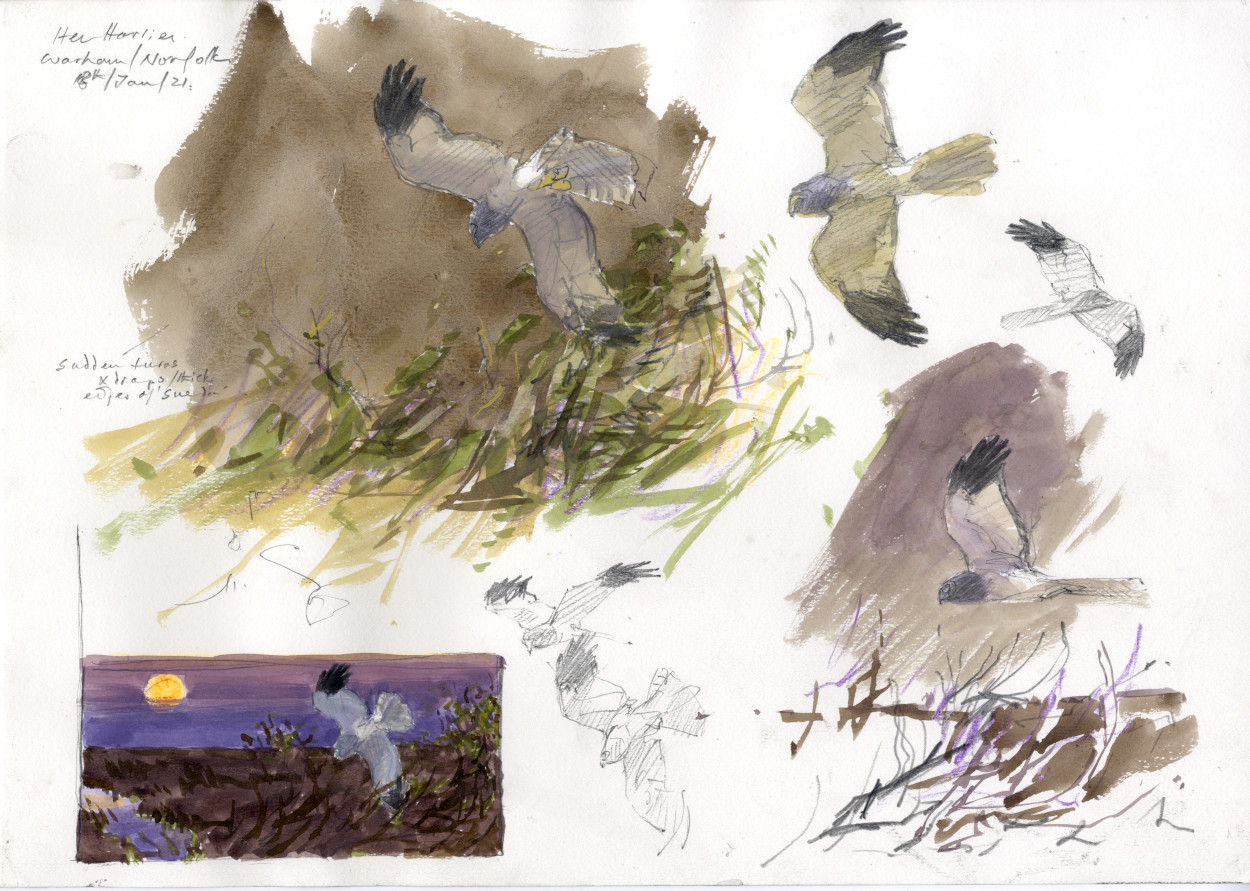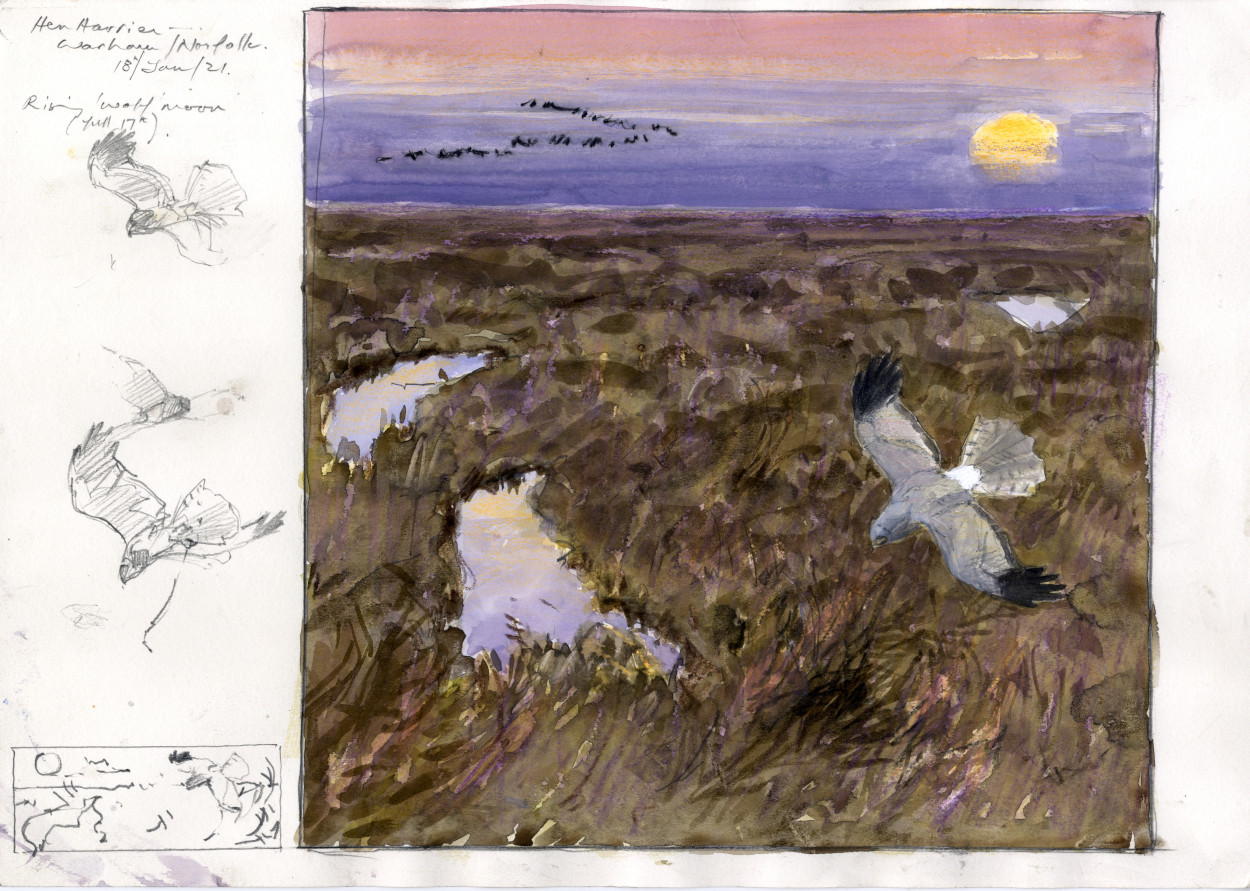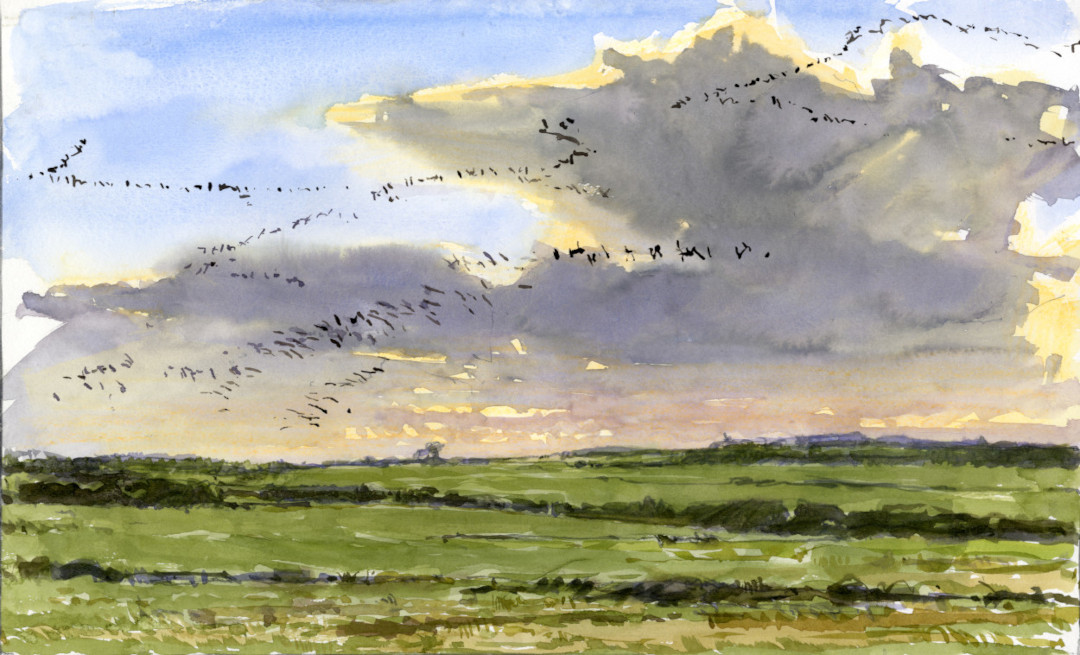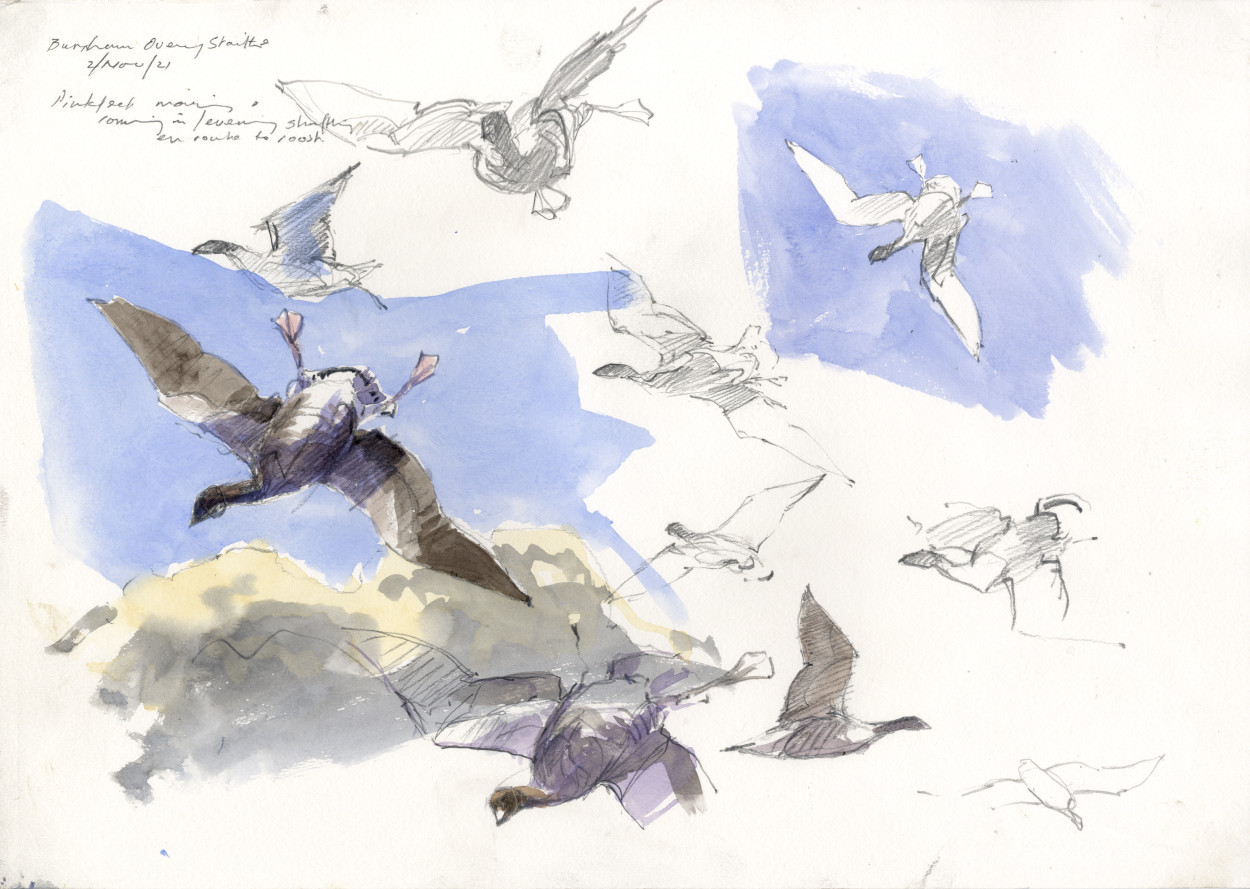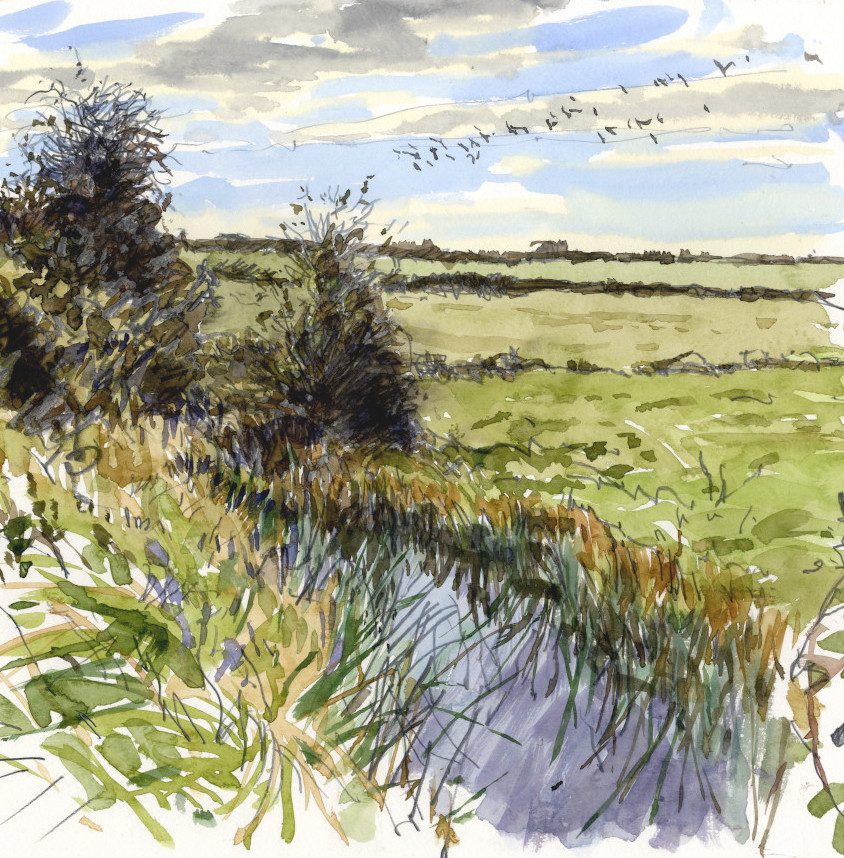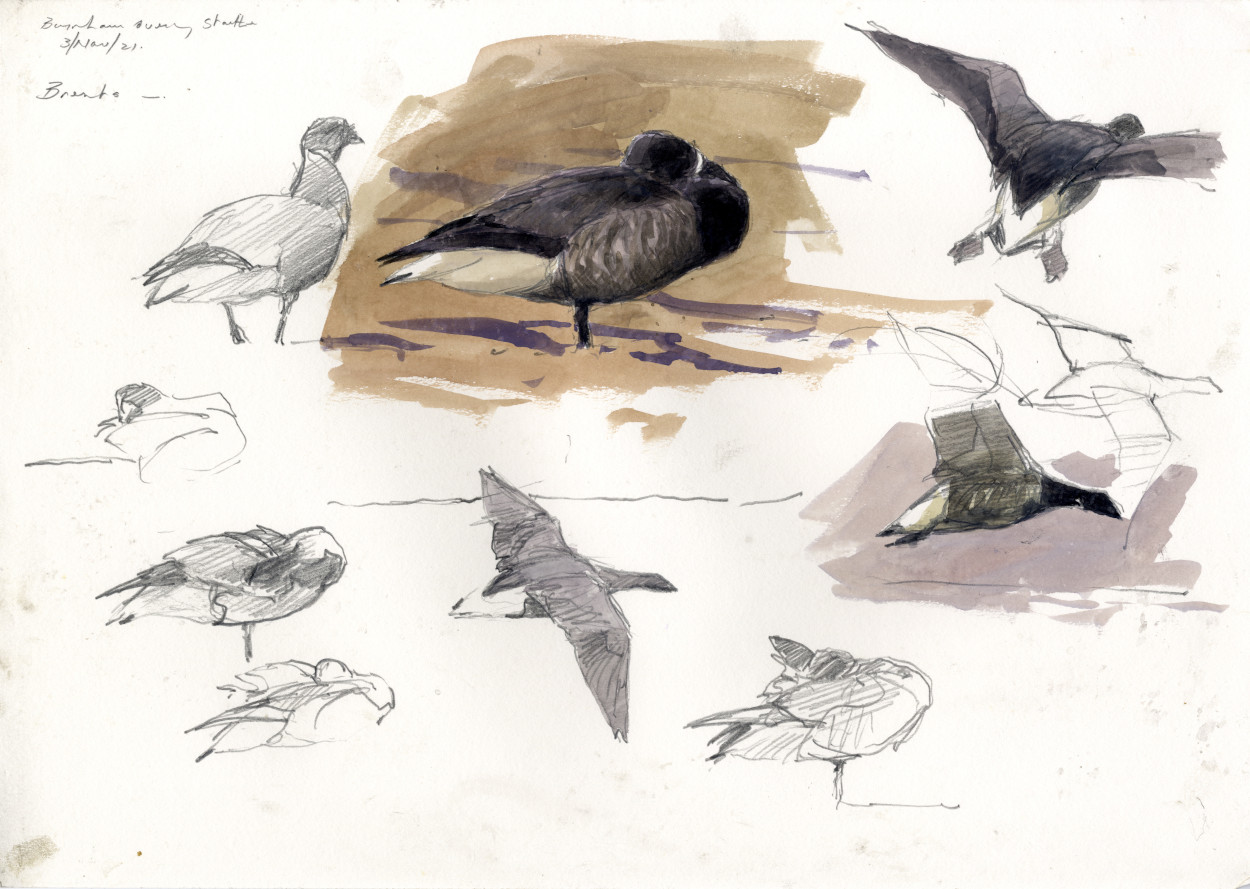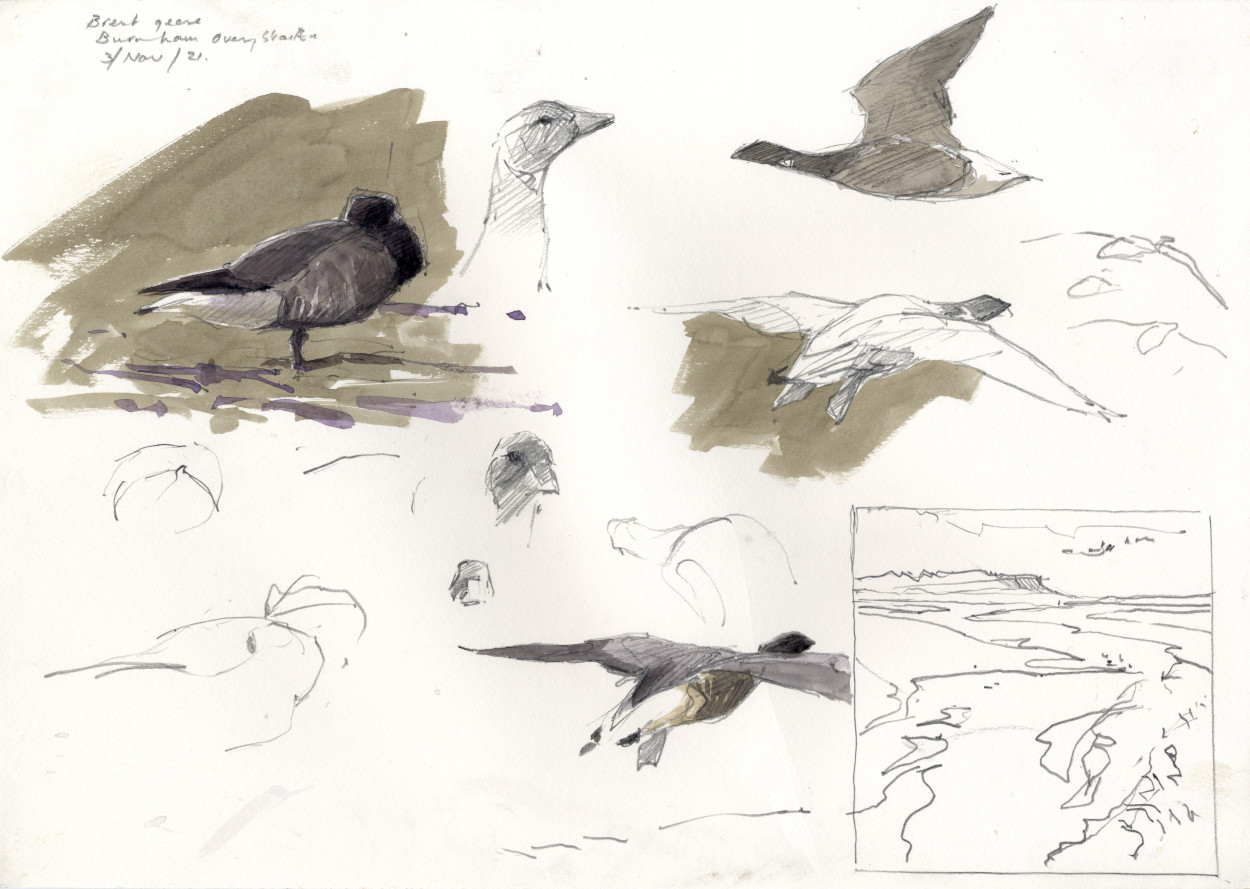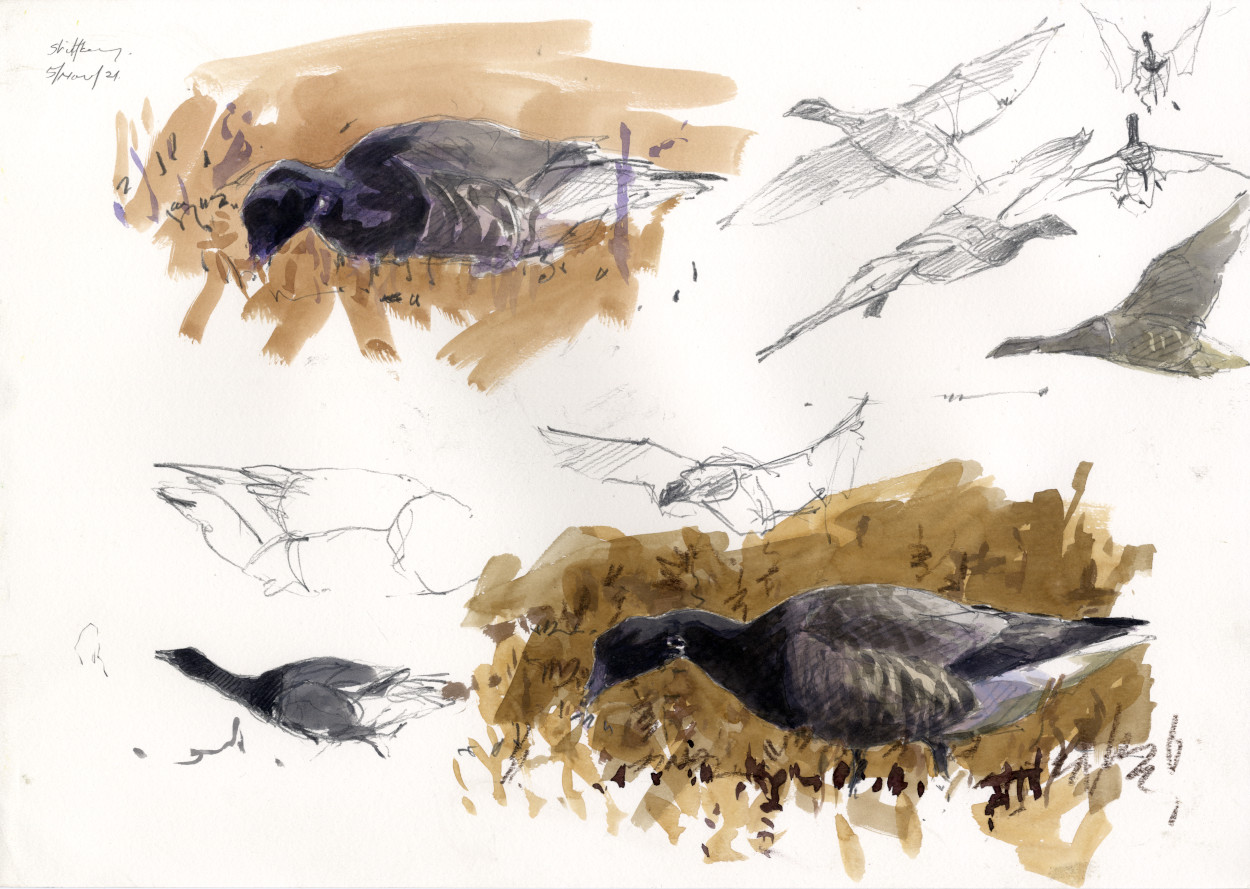A few days out and about on the marshes along the North Norfolk coast - this time mainly around Stiffkey and Warham. The evening after the full 'Wolf' moon I went to look over Warham Greens, a site where I'd seen hen harriers quite often before. With clear weather, the potential of beautiful light from a slightly later rising moon, and the possibility of a passing harrier the creative anticipation was running high. No sooner had I settled to watch than a male bird came in from the distant west. Weaving around and drifting low it was hunting as it moved east along the marsh. Once or twice it turned suddenly and dropped down into the vegetation to lift off just as quickly with no catch all the while heading slowly out of sight. I carried on making drawings until the failing light finally made me pack up and head back to base.
|
|
|
Whiffling describes the behaviour of a bird rapidly descending with a zig-zagging, side-slipping motion like that of a falling leaf. For a few brief moments the bird flies with its body turned upside down but with its neck and head twisted 180 degrees around in a normal position. The aerodynamics that usually lift the goose up are suddenly pushing it down as it briefly plummets toward the ground before flipping to reverse the action to a normal flying orientation. Whiffling might be used in some species to avoid avian predators or enable controlled but very fast descent. For geese targeted by wildfowlers it might be used to avoid a long, slow descent over an area where guns await a killing spree. Also, it might enable geese to get lower in the air very quickly when strong winds are blowing them off course and there’s an urgency to land in a narrowly defined area like a roost site or particularly focused feeding area. Whiffling behaviour is seen in several species including black-tailed godwit and lapwing, but geese – especially pink-footed - can be seen to do it frequently.
| North NorfolkNovember 2021With the weather looking settled for the week ahead, and it being the season of massed geese flocks shuffling around key areas of North Norfolk, brimming with hope and excitement I set off in the campervan. Watching the pink-footed geese from the sea wall bank at Burnham Overy Staithe of particular interest was the 'whiffling' behaviour as the birds dropped down into the fields. For a couple of hours I tried to unravel this behaviour by drawing the action over and over again as each group descended into the fields.
|
| Away from the fields and turning to focus on the saltmarsh there were flocks of brent geese. The dark-bellied subspecies of the brent goose is one of the characteristic birds of Norfolk’s coastal saltmarshes in winter. It is a small goose - of similar size to a mallard – with a sooty black head and neck and grey-brown back, with scaly dark flanks and underbelly with a very prominent white chevron-shaped rump and tail. Adults have a small white neck patch. They frequent the marshes moving between favoured feeding areas (especially areas of eel-grass) flying in loose flocks rather than in tight skeins like the pinkfeet. The brent geese in Norfolk are of the dark-bellied subspecies which breed in Russia and winter exclusively along the coasts of Western Europe. The south and east coasts of England are particularly important areas with over 100,000 birds wintering most years recently here in the UK. The light-bellied subspecies of brent goose also winters in the UK. Most of them are from breeding areas in Svalbard and they spend the winter mainly on the North and West coasts of Scotland. But light-bellied birds from the Canadian population also occur with the majority of these birds visiting Northern Ireland especially on Strangford Lough.
|
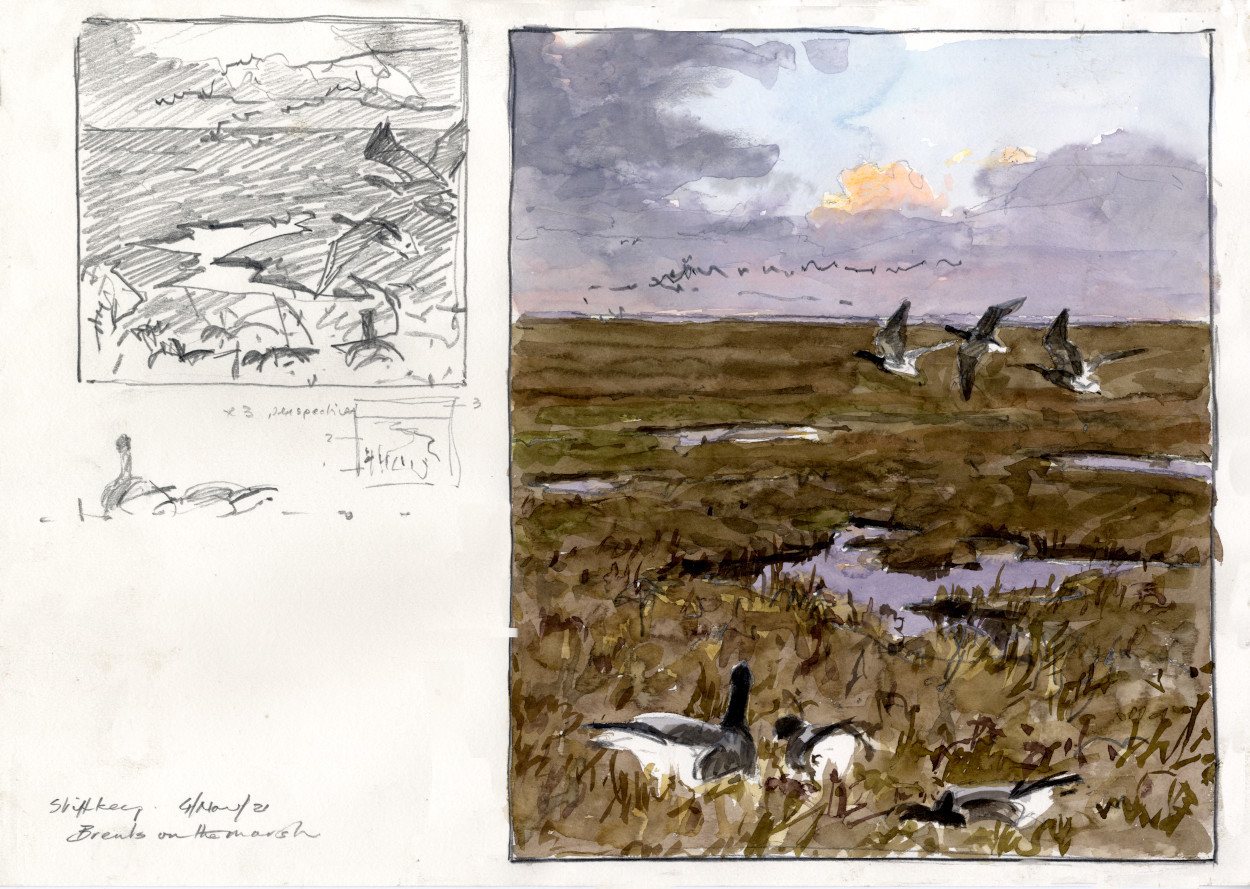
|
|
© Bruce Pearson 2025. All rights reserved
